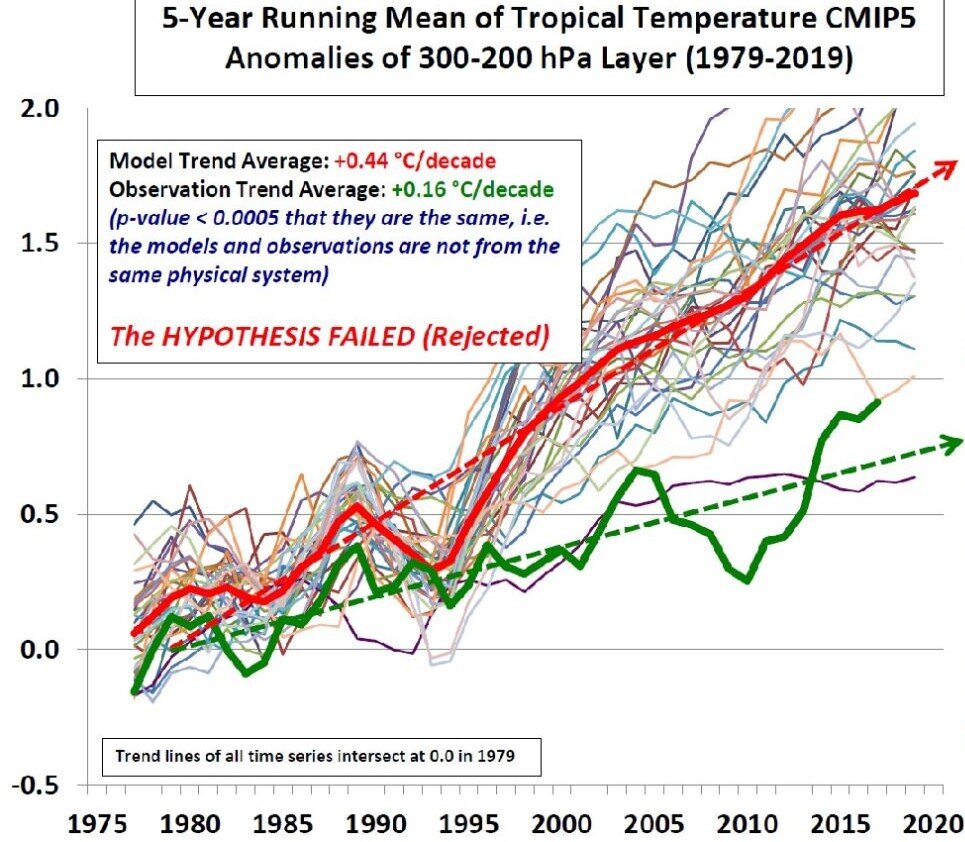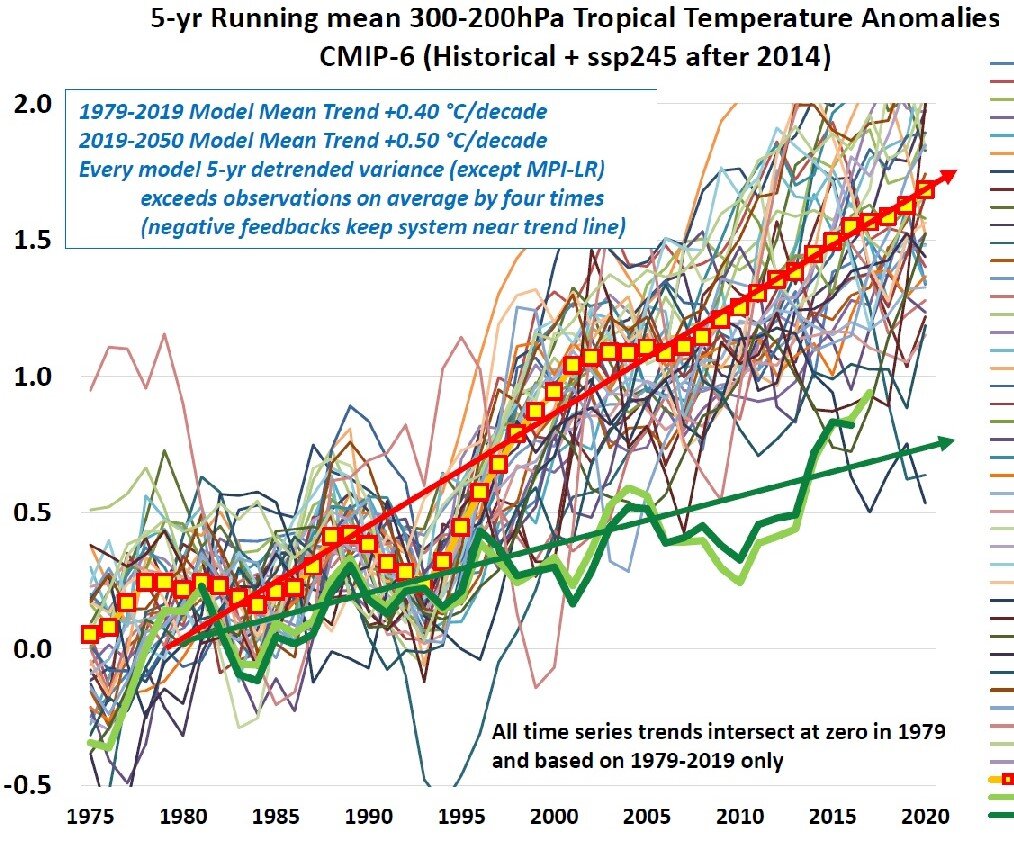Latest Computer Climate Models Run Almost as Hot as Before
/The narrative that global warming is largely human-caused and that we need to take drastic action to control it hinges entirely on computer climate models. It’s the models that forecast an unbearably hot future unless we rein in our emissions of CO2.
But the models have a dismal track record. Apart from failing to predict a recent slowdown in global warming in the early 2000s, climate models are known even by modelers to consistently run hot. The previous generation of models, known in the jargon as CMIP5 (Coupled Model Intercomparison Project Phase 5), overestimated short-term warming by more than 0.5 degrees Celsius (0.9 degrees Fahrenheit) above observed temperatures. That’s 50% of all the global warming since preindustrial times.
The new CMIP6 models aren’t much better. The following two figures reveal just how much both CMIP5 and CMIP6 models exaggerate predicted temperatures, and how little the model upgrade has done to shrink the difference between theory and observation. The figures were compiled by climate scientist John Christy, who is Director of the Earth System Science Center at the University of Alabama in Huntsville and an expert reviewer of the upcoming sixth IPCC (Intergovernmental Panel on Climate Change) report.
Both figures plot the warming relative to 1979 in degrees Celsius, measured in a band in the tropical upper atmosphere between altitudes of approximately 9 km (30,000 feet) and 12 km (40,000 feet). That’s a convenient band for comparison of model predictions with measurements made by weather balloons and satellites. The thin colored lines indicate the predicted variation of temperature with time for the different models, while the thick red and green lines show the mean trend for models and observations, respectively.
The trend for CMIP6 models is depicted more clearly in Christy’s next figure, which compares the warming rates for 39 of the models. The average CMIP6 trend in warming rate is 0.40 degrees Celsius (0.72 degrees Fahrenheit) per decade, compared with the actual observed rate of 0.17 degrees Celsius (0.31 degrees Fahrenheit) per decade – meaning that the predicted warming rate is 2.35 times too high.
These CMIP6 numbers are only a marginal improvement over those predicted by the older CMIP5 models, for which the warming trend was 0.44 degrees Celsius (0.72 degrees Fahrenheit) per decade, or 2.75 times higher than the observed rate of 0.16 degrees Celsius (0.29 degrees Fahrenheit) per decade (for a slightly different set of measurements),
It’s seen that the warming rates for any particular model fluctuate wildly in both cases, much more so than the observations themselves. Christy says the large variability is a sign that the models underestimate negative feedbacks in the climate system, especially from clouds that I’ve discussed in another post. Negative feedback is stabilizing and acts to damp down processes that cause fluctuations. There is evidence, albeit controversial, that feedback from high clouds such as cirrus clouds – which normally warm the planet – may not be as strongly positive as the new models predict, and could even be negative overall.
You may be wondering why all these comparisons between models and observations are made high up in the atmosphere, rather than at the earth’s surface which is where we actually feel global warming. The reason is the atmosphere at 9 to 12 km (6 to 7 miles) above the tropics is a much more sensitive test of CO2 greenhouse warming than it is near the ground. Computer climate models predict that the warming rate at those altitudes should be about twice as large as at ground level, giving rise to the so-called CO2 “hot spot.”
The hot spot is illustrated in the figure below, showing the air temperature as a function of both altitude (measured as atmospheric pressure) and global latitude, as predicted by a Canadian model. Similar predictions come from the other CMIP6 models. The hot spot is the red patch at the center of the figure bounded by the 0.6 degrees Celsius (1.1 degrees Fahrenheit) contour, extending roughly 20o either side of the equator and at altitudes of 30,000-40,000 feet. The corresponding temperature on the ground is seen to be less than 0.3 degrees Celsius (0.5 degrees Fahrenheit).
But the hot spot doesn’t show up in measurements made by weather balloons or satellites. This mismatch between models and experiment is important because the 30,000-40,000 feet band in the atmosphere is the very altitude from which infrared heat is radiated away from the earth. The models run hot, according to Christy, because they trap too much heat that in reality is lost to outer space – a consequence of insufficient negative feedback in the models.
Next: Growing Antarctic Sea Ice Defies Climate Models








